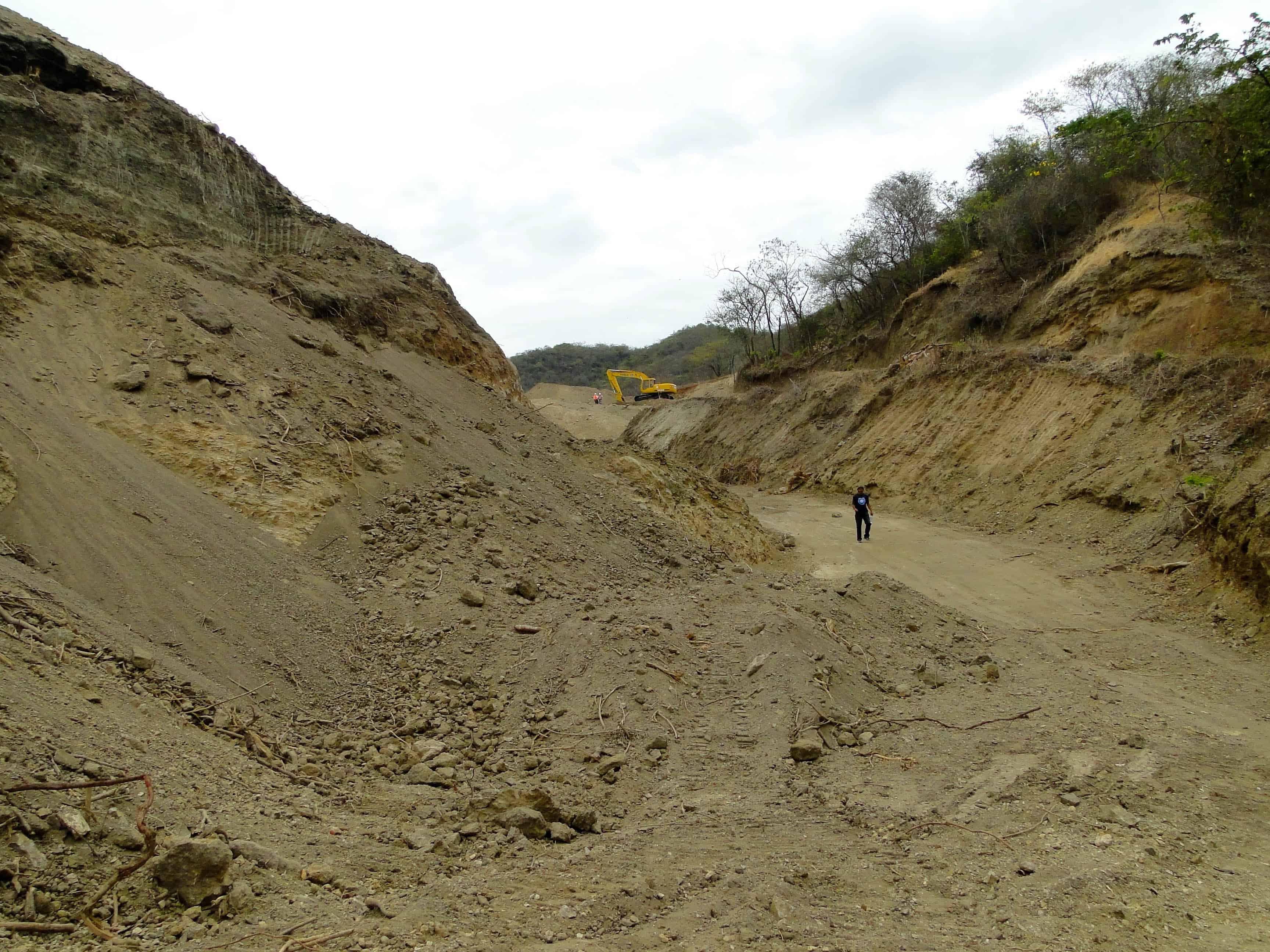SAN JOSÉ DEL GOLFO, Guatemala – An uncomfortable tension filled the air in the village of San José del Golfo, 28 kilometers northeast of Guatemala City, last Thursday. Driving through the streets, pairs of armed Civil National Police (PNC) could be seen standing “guard” at a fried chicken restaurant, in front of the public health center, and near a block of well-kept homes with flower gardens.
The police arrived in the village last Wednesday morning, along with the army, to try and break the La Puya protest, which for two years has prevented the construction of Kappes, Cassiday & Associates’ (KCA) massive El Tambor gold and silver mine. The protesters say the mining project would dangerously contaminate their water with arsenic, and a 2013 study found that the mine’s environmental impact report failed to adequately address the risk of contamination by arsenic and other toxic waste created by the mining process.
“There’s a mountain of chemicals that will be very destructive if they’re liberated,” La Puya protester Antonio Reyes Romero said.
Yet KCA and its local subsidiary, Exmingua, have continued their effort to open the mine with the backing of the PNC and Guatemalan government.
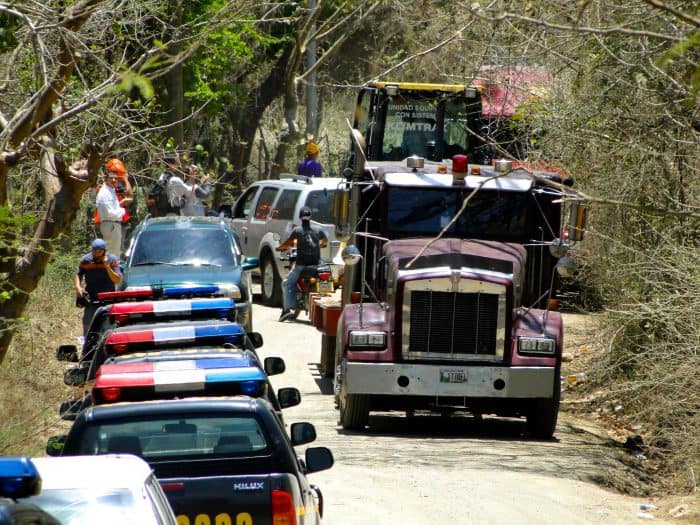
Efforts at negotiation between the protesters and KCA have broken down on multiple occasions. “We have had talks with the national [dialogue council] and with the president,” Romero said. “The government wants us to accept mineral exploitation, but the level of arsenic [in the water] is at a maximum.”
Opponents, who total about 45,000 people, hail from villages and communities in a 20-square-kilometer area around the mine. They have claimed the KCA donates to Guatemalan President Otto Pérez Molina’s ruling Patriot Party, something a KCA representative, Ryan Adams, denied.
KCA uses a carrot-and-stick approach to try and get its way in Guatemala, critics allege. Adams admits to being in regular communication with the president, who is in charge of appointing the ministers of mines, the interior and defense. KCA also has threatened to sue Guatemala for an untold sum of money if the mine fails to move forward. According to Adams, the lawsuit and political fallout would be too costly for Pérez Molina to stomach.
The mine is expected to produce as much as 52,000 tons of gold each year, VICE’s Giles Clarke reported.
According to Romero, the PNC “are helping the company to intimidate the residents” of San José del Golfo in the hopes of breaking the protest.
“It’s like the government and the companies are a bus,” Romero said. “And this bus doesn’t serve us. It’s a bus we can get on, but we can’t stop it. If the bus falls off a cliff, there’s always a new bus. None of the political parties help, … they’re all mercantile enterprises of people who want power.”
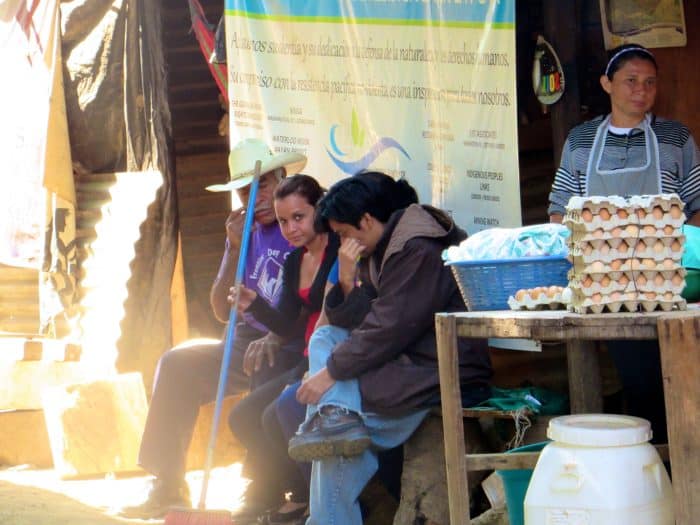
KCA began ramping up pressure against protesters last Wednesday. Trucks carrying bulldozers arrived Wednesday morning, with the intent of entering the mining site. Demonstrators blocked the road to prevent their entry, and a PNC force soon arrived, eventually growing to up to 300 armed officers. In response, the La Puya protesters put out a call for help, and residents of the surrounding villages flocked to the site as church bells rang. At the end of the day, 800 protesters had peacefully turned away KCA’s machinery and the PNC force.
“The resistance is totally allowed,” Prudencio Rodríguez, a Catholic priest from the town of Durano-Chinautla said. “The resistance has the particularity of nonviolence and a language that … doesn’t cause more damage than necessary. The language is so much more effective than in the past.”
KCA’s Adams claimed that the company did not contact the PNC or army for assistance in opening the mine, and he accused demonstrators of calling in the police.
However, police officers who arrived at San José del Golfo were not local, but instead came from the capital.
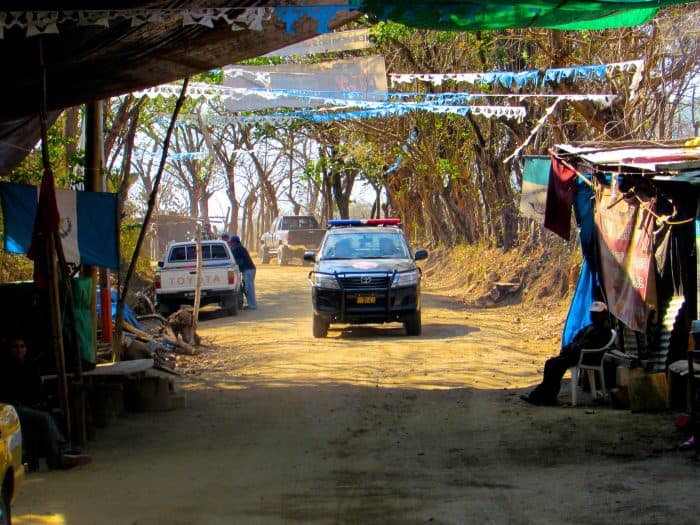
At the same time the PNC force sought to overwhelm the protesters, two truckloads of soldiers were unloaded in the center of San José del Golfo. An army spokesman later said that soldiers hadn’t set foot in the town and were only passing through for “recreation.” When pressed about why police officers and soldiers spent the day walking up and down the main street, the spokesman said it was common for soldiers to assist police on patrol.
On Thursday, the elevated police presence in San José del Golfo could still be seen. A PNC spokesman at the local station claimed there were only 10 officers in the town, yet 14 were visible on the main street, four had driven through the protest site multiple times in a pickup, and another 24 ran a checkpoint at the entrance to the town.
“You can say that the programs of the police are incomplete. They don’t control the crime and violence around the country, [they only control] the good people,” Rodríguez said.
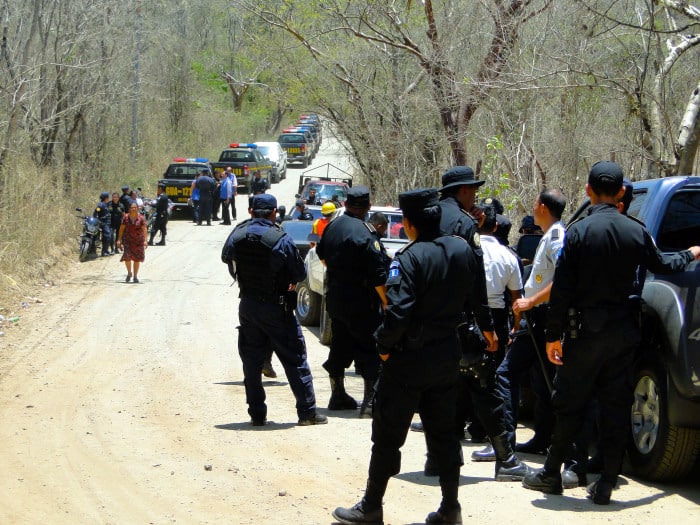
Benjamin Reeves is a freelance journalist based in Antigua, Guatemala. Follow him on Twitter and on his blog.

